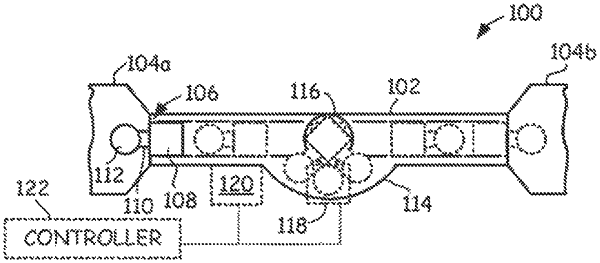| CPC H01L 21/67724 (2013.01) [B65G 47/92 (2013.01); H01L 21/67167 (2013.01); H01L 21/67709 (2013.01); H01L 21/67712 (2013.01); H01L 21/68707 (2013.01)] | 20 Claims |

|
1. A transport system, comprising:
a vacuum tunnel having a first end, an opposite second end, a first side, and an opposite second side, wherein a distance between the first end and the second end is greater than a distance between the first side and the second side, wherein the vacuum tunnel is configured to interface with a first processing tool on the first end of the vacuum tunnel and a second processing tool on the second end of the vacuum tunnel, the vacuum tunnel comprising:
an expanded region;
a substrate transport carriage, comprising:
a carriage body configured to linearly travel between the first end and the opposite second end of the vacuum tunnel; and
an end effector coupled to the carriage body, the end effector configured to support a substrate during transport within the vacuum tunnel, the end effector configured to extend into the first or second processing tool to extract or place the substrate while the carriage body remains within the vacuum tunnel; and
a rotary stage disposed in the expanded region, the rotary stage configured to rotate the substrate transport carriage between about 0 degrees and about 180 degrees.
|